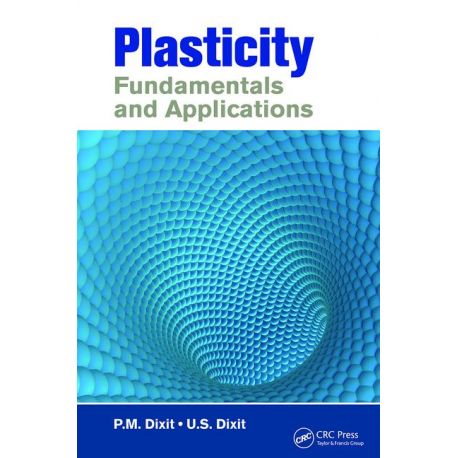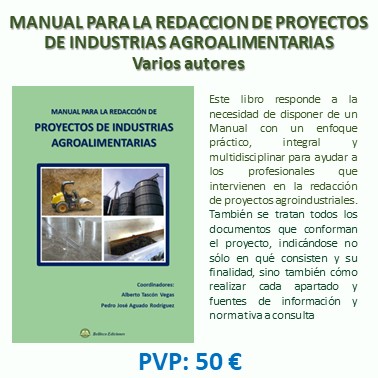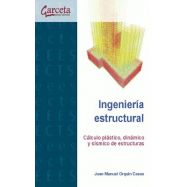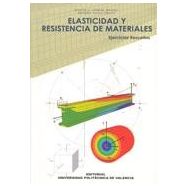Ningún producto
Materias
- BELLISCO EDICIONES. Nuestro Fondo Editorial
- FONDOS EDITORIALES EN DISTRIBUCION
- LIBROS TECNICOS EN INGLES
- ARQUITECTURA - URBANISMO
- AUTOMOCION - MOTORES - VEHICULOS
- AVIONICA - AERONAUTICA
- CALIDAD - EMPRESARIALES - GESTION
- CIENCIAS EXACTAS - MATEMATICAS
- CIENCIAS NATURALES Y APLICADAS
- CIENCIAS DE LA TIERRA - INGENIERIA DEL SUELO
- DICCIONARIOS TECNICOS
- ESTRUCTURAS - CONSTRUCCION
- FORMACION PROFESIONAL
- HIDRAULICA - INGENIERIA SANITARIA - AGUAS
- INGENIERIA CIVIL - OBRAS PUBLICAS
- INGENIERIA MECANICA E INDUSTRIAL
- INSTALACIONES . GENERALES, EN EDIFICACION E INDUSTRIALES
- MATERIALES
- MEDIO AMBIENTE
- NORMATIVA
- OPOSICIONES
- PREVENCION DE RIESGOS LABORALES
- PROGRAMAS INFORMATICOS DE CALCULO
- TECNOLOGIA DE LOS ALIMENTOS: Industrias: Conservación, envasado y cadenas alimentarias
- TELECOMUNICACIONES - INFORMATICA - TECNOLOGIA DE LA INFORMACION
- OUTLET DE BELLISCO: Descuentos de hasta el 80%
- RELIGION, TEOLOGIA, MORAL Y ESPIRITUALIDAD
- VARIOS
- OFERTAS
- PROMOCIONES
- NEWSLETTER
- CATEGORIAS DESTACADAS
- ULTIMAS NOVEDADES BELLISCO
- ARQUITECTURA SOSTENBILE
- URBANISNO
- MATEMATICAS EN GENERAL
- AGRONOMOS-AGRICULTURA-FORESTALES
- ELECTROMAGENTISMO-ELECTRONICA-ELECTRICIDAD
- INGª Y MECÁNICA DEL SUELO. CIMENTACIONES
- TOPOGRAFIA, FOTOGRAMETRÍA, GEODESIA
- EDIFICACION
- ANALISIS DE ESTRUCTURAS, RESISTENCIA DE MATERIALES, ELASTICIDAD, CALCULO MATRICIAL
- OFICIOS VARIOS
- ABASTECIMIENTO Y DISTRIBUCION DE AGUA
- PUENTES
- TUNELES Y OBRAS SUBTERRANEAS
- MAQUINAS Y MECANISMOS
- SOLDADURA
- CLIMATIZACION
- INSTALACIONES DE AGUA
- INSTALACIONES ELECTRICAS CIENCIA E INGENIERIA DE MATERIALES
- ENERGIAS RENOVABLES
- DESARROLLO SOSTENIBLE
- INFORMATICA-SISTEMAS-FORMACION-PROGRAMAS
-
PLASTICITY: FUNDAMENTALS AND APPLICATIONS
 Ver más grande
Ver más grande Referencia: Código 07796
Octubre de 2018 - P.M. Dixit, U.S. Dixit - Refª 7796
P.M. Dixit, U.S. Dixit
Octubre de 2018 Páginas: 602 Tapa blanda
Código 7796 ISBN/EAN: 9781138074965
Summary
Explores the Principles of Plasticity
Most undergraduate programs lack an undergraduate plasticity theory course, and many graduate programs in design and manufacturing lack a course on plasticity—leaving a number of engineering students without adequate information on the subject. Emphasizing stresses generated in the material and its effect, Plasticity: Fundamentals and Applications effectively addresses this need. This book fills a void by introducing the basic fundamentals of solid mechanics of deformable bodies. It provides a thorough understanding of plasticity theory, introduces the concepts of plasticity, and discusses relevant applications.
Studies the Effects of Forces and Motions on Solids
The authors make a point of highlighting the importance of plastic deformation, and also discuss the concepts of elasticity (for a clear understanding of plasticity, the elasticity theory must also be understood). In addition, they present information on updated Lagrangian and Eulerian formulations for the modeling of metal forming and machining.
Topics covered include:
- Stress
- Strain
- Constitutive relations
- Fracture
- Anisotropy
- Contact problems
Plasticity: Fundamentals and Applications enables students to understand the basic fundamentals of plasticity theory, effectively use commercial finite-element (FE) software, and eventually develop their own code. It also provides suitable reference material for mechanical/civil/aerospace engineers, material processing engineers, applied mechanics researchers, mathematicians, and other industry professionals.
Table of Contents
Solid Mechanics and Its Applications
Introduction
Continuum Hypothesis
Elasto-Plastic Solids
Applications of Solid Mechanics
Scope of this Textbook
Review of Algebra and Calculus of Vectors and Tensors
Introduction
Index Notations
Kronecker Delta and Levy-Civita Symbols
Vectors
Transformation Rules for Vector Components under the Rotation of Cartesian Coordinate System
Tensors
Tensors and Vectors in Curvilinear Coordinates
References
Stress
Introduction
Stress at a Point
Surface Forces and Body Forces
Momentum Balance Laws
Theorem of Virtual Work
Cauchy’s Theorem
Transformation of Stress Components
Stresses on an Oblique Plane
Principal Stresses
Maximum Shear Stress
Octahedral Stresses
Hydrostatic and Deviatoric Stresses
Mohr’s Circle
References
Measures of Deformation and Rate of Deformation
Introduction
Deformation
Linear Strain Tensor
Infinitesimal Rotation Tensor
Deformation Gradient
Green Strain Tensor
Almansi Strain Tensor
Logarithmic Strain Tensor
Strain–Displacement Relation in Curvilinear Coordinate
Transformation of Strain Components
Principal Strains
Maximum Shear Strain
Octahedral Strain
Volumetric Strain
Mean and Deviatoric Strain
Mohr’s Circle for Strain
Incremental Strain Tensor
Material and Local Time Derivative
Rate of Deformation Tensor
Spin Tensor
On Relation between Incremental Strain and Strain Rate Tensors
Compatibility Conditions
References
Incremental and Rate Type of Elastic–Plastic Constitutive Relations for Isotropic Materials, Objective Incremental Stress and Stress Rate Measures
Introduction
Elastic Stress–Strain Relations for Small Deformation
Experimental Observations on Elastic–Plastic Behavior
Criteria for Initial Yielding of Isotropic Materials
Modeling of Isotropic Hardening or Criterion for Subsequent Isotropic Yielding
Elastic–Plastic Stress–Strain and Stress–Strain Rate Relations for Isotropic Materials
Objective Incremental Stress and Objective Stress Rate Tensors
Unloading Criterion
References
Eulerian and Updated Lagrangian Formulations
Introduction
Equation of Motion in Terms of Velocity Derivatives
Incremental Equation of Motion
Eulerian Formulation
Example of Eulerian Formulation: A Wire Drawing Problem
Updated Lagrangian Formulation
Example on Updated Lagrangian Formulation: Forging of a Cylindrical Block
References
Calculus of Variations and Extremum Principles
Introduction
Functional
Extremization of a Functional
Solution of Extremization Problems Using δ Operator
Obtaining Variational Form from a Differential Equation
Principle of Virtual Work
Principle of Minimum Potential Energy
Solution of Variational Problems by Ritz Method
References
Two-Dimensional and Axisymmetric Elasto-Plastic Problems
Introduction
Symmetric Beam Bending of a Perfectly Plastic Material (-D Problem)
Hole Expansion in an Infinite Plate (Plane Stress and Axisymmetric Problem)
Analysis of Plastic Deformation in the Flange of Circular Cup during Deep Drawing Process (Plane Stress and Axisymmetric Problem)
Necking of a Cylindrical Rod
References
Appendix A
Appendix B
Contact Mechanics
Introduction
Hertz Theory
Elastic–Plastic Indentation
Cavity Model
Sliding of Elastic–Plastic Solids
Rolling Contact
Principle of Virtual Work and Discretization of Contact Problems
References
Dynamic Elasto-Plastic Problems
Introduction
Longitudinal Stress Wave Propagation in a Rod (-D Problem)
Taylor Rod Problem (Impact of Cylindrical Rod against Flat Rigid Surface, -D Problem)
References
Continuum Damage Mechanics and Ductile Fracture
Introduction
Motivation
Objective and Plan of the Chapter
Classification of Fracture
Global and Local Approaches to Fracture
Limitations of Global and Local Approaches to Fracture
Ductile Fracture
Models of Fracture Initiation
Thermodynamics of Continuum
Continuum Damage Mechanics
Techniques for Damage Measurement
Application of a CDM Model
References
Plastic Anisotropy
Introduction
Normal and Planar Anisotropy
Hill’s Anisotropic Yield Criteria
Plane Stress Anisotropic Yield Criterion of Barlat and Lian
Three-Dimensional Anisotropic Yield Criteria of Barlat and Coworkers
Plane Strain Anisotropic Yield Criterion
Constitution Relations for Anisotropic Materials
Kinematic Hardening
References
Index
TAMBIEN LE PUEDE INTERESAR
- 36,81 €
- 26,13 €
- 28,00 €
- 30,00 €






































